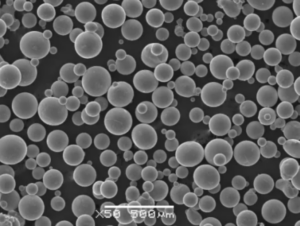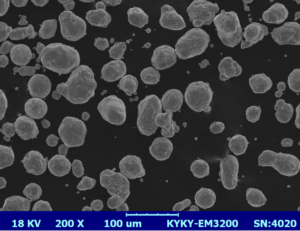Visión general de Polvos de metales refractarios
Cuando se piensa en materiales capaces de soportar condiciones extremas, los metales refractarios son los héroes anónimos de la tabla periódica. Estos metales se utilizan en infinidad de aplicaciones de alta temperatura, desde la industria aeroespacial hasta la fabricación industrial. Pero, ¿qué son exactamente los polvos metálicos refractarios y por qué son tan fundamentales en las tecnologías avanzadas?
Los polvos metálicos refractarios son partículas finamente divididas de metales que tienen puntos de fusión excepcionalmente altos y son muy resistentes al desgaste, la corrosión y la deformación. Los metales refractarios más comunes son el wolframio, el molibdeno, el tántalo, el niobio y el renio. Estos polvos se utilizan en la fabricación de componentes que deben funcionar en condiciones extremas, como motores a reacción, reactores nucleares e incluso en la exploración espacial.
Nunca se insistirá lo suficiente en la importancia de los polvos metálicos refractarios. Sus propiedades únicas permiten utilizarlos en entornos en los que otros materiales fallarían. Tanto si es ingeniero, científico o simplemente una persona interesada en los materiales avanzados, es fundamental que conozca las propiedades, aplicaciones y tipos de estos polvos.
Este artículo se adentra en el mundo de los polvos metálicos refractarios, explorando todos los aspectos, desde su composición hasta sus aplicaciones, e incluso ofreciendo una comparación detallada de los distintos tipos. Embarquémonos juntos en este viaje técnico.
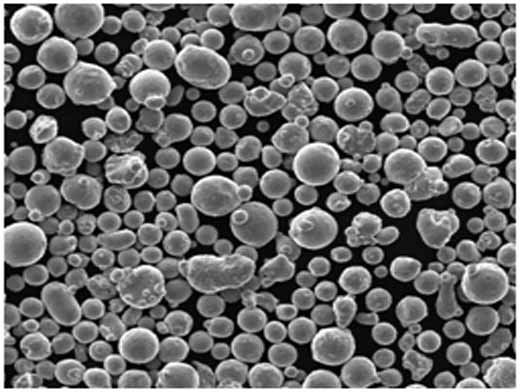
Tipos y composición de los polvos metálicos refractarios
Existen varios tipos de polvos metálicos refractarios, cada uno con su composición y propiedades únicas. A continuación se detallan algunos de los polvos metálicos refractarios más utilizados:
| Polvo metálico | Composición | Punto de fusión | Densidad | Características principales |
|---|---|---|---|---|
| Tungsteno (W) | Tungsteno puro | 3,422°C | 19.25 g/cm³ | Punto de fusión más alto, excelente resistencia a altas temperaturas y conductividad. |
| Molibdeno (Mo) | Molibdeno puro | 2,623°C | 10.22 g/cm³ | Buena conductividad térmica, resistencia a la corrosión y baja dilatación térmica. |
| Tántalo (Ta) | Tántalo puro | 3,017°C | 16.69 g/cm³ | Alta ductilidad, excelente resistencia a la corrosión y biocompatibilidad. |
| Niobio (Nb) | Niobio puro | 2,468°C | 8.57 g/cm³ | Alto punto de fusión, excelente resistencia a la corrosión y propiedades superconductoras. |
| Renio (Re) | Renio puro | 3,185°C | 21.02 g/cm³ | Punto de fusión extremadamente alto, buena resistencia al desgaste y propiedades catalíticas. |
| Cromo (Cr) | Cromo puro | 1,907°C | 7.19 g/cm³ | Gran dureza, resistencia a la corrosión y propiedades reflectantes. |
| Hafnio (Hf) | Hafnio puro | 2,233°C | 13.31 g/cm³ | Excelente resistencia a la corrosión, alto punto de fusión y propiedades de absorción de neutrones. |
| Circonio (Zr) | Circonio puro | 1,855°C | 6.52 g/cm³ | Alta resistencia a la corrosión, baja sección transversal de captura de neutrones y buena ductilidad. |
| Iridio (Ir) | Iridio puro | 2,446°C | 22.56 g/cm³ | Densidad extremadamente alta, excelente resistencia a la corrosión y alto punto de fusión. |
| Osmio (Os) | Osmio puro | 3,033°C | 22.59 g/cm³ | Máxima densidad, gran dureza y excelente resistencia al desgaste. |
Características de Polvos de metales refractarios
¿Qué hace que los polvos metálicos refractarios sean tan especiales? Todo está en sus características. Estos polvos presentan propiedades que no sólo son únicas, sino también esenciales para aplicaciones de alta resistencia. Analicemos estas características:
- Puntos de fusión elevados: La característica más notable de los metales refractarios es su punto de fusión increíblemente alto, que a menudo supera los 2.000°C. El tungsteno, por ejemplo, tiene el punto de fusión más alto de todos los metales, con 3.422°C. Esta propiedad hace que estos metales sean indispensables en aplicaciones donde el calor extremo es un factor, como en toberas de cohetes y componentes de hornos.
- Alta densidad: Los metales refractarios como el wolframio y el renio son conocidos por sus altas densidades. Por eso son ideales para aplicaciones que requieren materiales capaces de absorber grandes cantidades de energía cinética, como la munición perforante.
- Resistencia a la corrosión: Muchos metales refractarios, en particular el tantalio y el niobio, presentan una excelente resistencia a la corrosión, incluso en entornos químicos agresivos. Esto los hace ideales para su uso en equipos de procesamiento químico e implantes médicos.
- Resistencia al desgaste: La elevada dureza de los metales refractarios como el cromo y el osmio proporciona una excelente resistencia al desgaste, lo que los hace adecuados para herramientas de corte, revestimientos resistentes al desgaste y componentes de alta durabilidad.
- Conductividad térmica y eléctrica: A pesar de sus altos puntos de fusión, muchos metales refractarios también poseen una buena conductividad térmica y eléctrica. Esto es especialmente cierto en el caso del wolframio y el molibdeno, por lo que resultan útiles en contactos eléctricos y elementos calefactores.
- Ductilidad y maquinabilidad: Mientras que algunos metales refractarios son conocidos por su dureza, otros, como el tántalo, son muy dúctiles, lo que significa que pueden estirarse en alambres finos sin romperse. Esta ductilidad es crucial en aplicaciones como la electrónica y la ingeniería aeroespacial.
Aplicaciones de los polvos metálicos refractarios
Dadas sus propiedades únicas, no es de extrañar que los polvos metálicos refractarios se utilicen en una amplia gama de aplicaciones. A continuación le mostramos dónde se suelen utilizar estos materiales:
| Solicitud | Polvo de metal refractario utilizado | Propósito |
|---|---|---|
| Componentes aeroespaciales | Tungsteno, molibdeno | Resistencia a altas temperaturas en motores de cohetes, escudos térmicos y álabes de turbina. |
| Reactores nucleares | Circonio, Hafnio | Absorción de neutrones, resistencia a la corrosión y componentes estructurales en reactores. |
| Implantes médicos | Tántalo, niobio | Biocompatibilidad y resistencia a la corrosión en implantes y prótesis. |
| Electrónica | Tungsteno, tántalo | Se utiliza en condensadores, resistencias y otros componentes electrónicos debido a su conductividad y estabilidad. |
| Herramientas de corte | Tungsteno, cromo | Resistencia al desgaste y durabilidad en herramientas de corte, perforación y minería. |
| Equipos de procesamiento químico | Tántalo, molibdeno | Resistencia a la corrosión en equipos de manipulación de ácidos y productos químicos. |
| Defensa y munición | Tungsteno, Osmio | Materiales de alta densidad para munición perforante y penetradores. |
| Catalizadores en las reacciones químicas | Renio, Iridio | Propiedades catalíticas en las reacciones químicas, como en los procesos de refinado y síntesis. |
| Superconductores | Niobio | Propiedades superconductoras en imanes, máquinas de resonancia magnética y aceleradores de partículas. |
| Joyería y relojería | Tungsteno, platino | Alta durabilidad, resistencia a la corrosión y atractivo estético en artículos de lujo. |


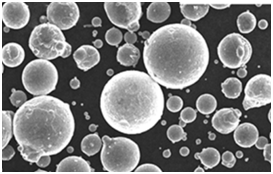
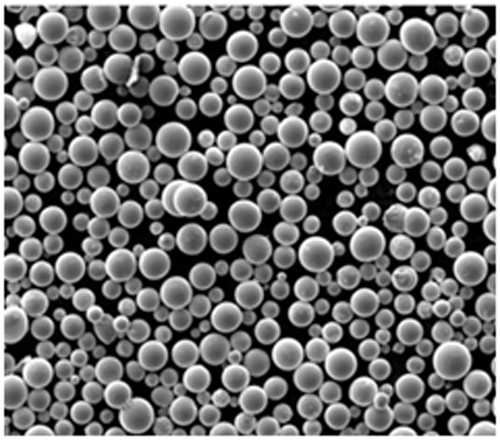


Especificaciones, tamaños, calidades y normas
Cuando se trabaja con polvos metálicos refractarios, es importante conocer las especificaciones, tamaños, grados y normas que rigen su uso. Estos parámetros garantizan que se utilice el material adecuado para cada aplicación y que el rendimiento sea constante y fiable.
| Metal refractario | Tamaño de partícula | Grado | Estándar | Aplicación típica |
|---|---|---|---|---|
| Tungsteno | 0.5 – 10 µm | W1, W2, W3 | ASTM B777 | Componentes de alta temperatura, contactos eléctricos. |
| Molibdeno | 1 – 15 µm | Mo1, Mo2 | ASTM B386 | Elementos calefactores, revestimientos de proyección térmica. |
| Tantalio | 0.5 – 5 µm | Ta1, Ta2 | ASTM B521 | Implantes médicos, equipos de procesamiento químico. |
| Niobio | 1 – 20 µm | Nb1, Nb2 | ASTM B392 | Superconductores, reactores nucleares. |
| Renio | 0.1 – 5 µm | Re1, Re2 | ASTM F1760 | Catalizadores, termopares de alta temperatura. |
| Cromo | 1 – 50 µm | Cr1, Cr2 | ASTM B835 | Recubrimientos resistentes al desgaste, producción de aleaciones. |
| Hafnio | 0.2 – 10 µm | Hf1, Hf2 | ASTM B776 | Reactores nucleares, componentes aeroespaciales. |
| Zirconio | 1 – 25 µm | Zr1, Zr2 | ASTM B551 | Procesamiento químico, reactores nucleares. |
| Iridium | 0.1 – 10 µm | Ir1, Ir2 | ASTM B785 | Contactos eléctricos, bujías. |
| Osmio | 0.5 – 5 µm | Os1, Os2 | Especificaciones personalizadas | Recubrimientos resistentes al desgaste, producción de aleaciones. |
Proveedores y precios
Encontrar el proveedor adecuado para polvos de metal refractario es crucial, ya que la calidad y la consistencia del polvo pueden afectar significativamente a su aplicación. Los precios pueden variar en función de factores como la pureza, el tamaño de las partículas y la dinámica de la cadena de suministro.
| Proveedor | Oferta de metales refractarios | Precio medio (por kg) | Región | Especialidad |
|---|---|---|---|---|
| H.C. Starck | Tungsteno, molibdeno, tantalio, niobio | $500 – $2,000 | Global | Polvos de gran pureza, granulometrías personalizadas, calidad constante. |
| Tungsteno y polvos | Tungsteno, renio, tántalo | $600 – $2,500 | Norteamérica, Europa | Polvos de alto rendimiento para aplicaciones aeroespaciales, de defensa e industriales. |
| ATI | Tungsteno, hafnio, circonio | $450 – $1,800 | Estados Unidos | Suministro fiable para industrias críticas, amplia gama de metales refractarios. |
| Plansee | Molibdeno, wolframio, niobio | $400 – $1,500 | Europa, Asia | Especializada en aplicaciones de alta temperatura, producción de aleaciones a medida. |
| Rhenium Alloys, Inc. | Aleaciones de renio, molibdeno y renio | $2,000 – $10,000 | Estados Unidos | Mercados especializados, aleaciones personalizadas, materiales de alto rendimiento. |
| Grupo de carburo cementado Zhuzhou | Tungsteno, cromo, tántalo | $300 – $1,200 | China | Producción a gran escala, precios competitivos, calidad fiable. |
| Treibacher Industrie AG | Tungsteno, tantalio, niobio | $500 – $2,000 | Europa, América del Norte | Materiales de gran pureza, soluciones personalizadas y un sólido apoyo en I+D. |
| CBMM | Niobio | $800 – $3,000 | Global | Productor líder de niobio, muy centrado en la calidad y la innovación. |
| JSC Chepetsky | Circonio, Hafnio | $600 – $2,200 | Rusia, Europa | Especializada en materiales de grado nuclear, polvos de gran pureza. |
| Elementos americanos | Todos los metales refractarios | $400 – $10,000 | Global | Amplia gama de productos, de pequeñas a grandes cantidades, centrados en la innovación. |
Ventajas y limitaciones de los polvos metálicos refractarios
Aunque los polvos metálicos refractarios ofrecen increíbles ventajas, también tienen ciertas limitaciones. He aquí una comparación de sus pros y sus contras:
| Ventaja | Limitación |
|---|---|
| Resistencia a altas temperaturas: Los metales refractarios pueden soportar temperaturas extremas, lo que los hace ideales para aplicaciones de alto estrés como la industria aeroespacial y los reactores nucleares. | Coste: Estos metales suelen ser caros debido a su rareza y a la complejidad de su extracción y procesamiento. |
| Resistencia a la corrosión: Metales como el tantalio y el niobio son muy resistentes a la corrosión, por lo que resultan adecuados para procesos químicos y aplicaciones médicas. | Dificultad de mecanizado: Algunos metales refractarios son difíciles de mecanizar debido a su dureza y fragilidad. |
| Alta densidad: La alta densidad de metales como el wolframio y el osmio los hace adecuados para aplicaciones que requieren peso y absorción de energía cinética, como en defensa y el sector aeroespacial. | Disponibilidad: Algunos metales refractarios, como el renio y el iridio, son raros y su disponibilidad es limitada, lo que puede plantear problemas en la cadena de suministro. |
| Resistencia al desgaste: Los metales refractarios como el cromo ofrecen una excelente resistencia al desgaste, que es crucial para las herramientas de corte y los revestimientos resistentes al desgaste. | Oxidación: Algunos metales refractarios, en particular el molibdeno y el wolframio, son propensos a la oxidación a altas temperaturas, a menos que estén protegidos por revestimientos o en ambientes inertes. |
| Ductilidad: Los metales como el tántalo son muy dúctiles, lo que permite darles formas complejas sin que se agrieten, algo esencial para los componentes electrónicos y los dispositivos médicos. | Toxicidad: Algunos metales refractarios y sus compuestos pueden ser tóxicos, por lo que deben manipularse y eliminarse con cuidado. |
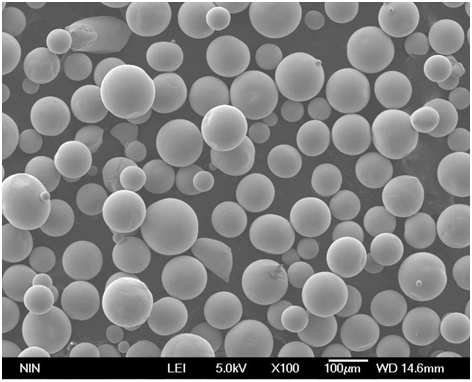
preguntas frecuentes
| Pregunta | Respuesta |
|---|---|
| ¿Qué son los polvos metálicos refractarios? | Los polvos metálicos refractarios son partículas finas de metales con puntos de fusión elevados, que se utilizan en aplicaciones que requieren una resistencia extrema al calor y al desgaste. |
| ¿Por qué son caros los metales refractarios? | Estos metales suelen ser raros y difíciles de extraer y procesar, lo que eleva su coste. |
| ¿Cuál es el metal refractario más duro? | El wolframio está considerado el metal refractario más duro, con una dureza Mohs de 7,5. |
| ¿Pueden mecanizarse los metales refractarios? | Sí, pero algunos son difíciles de mecanizar debido a su dureza y fragilidad, y requieren herramientas y técnicas especializadas. |
| ¿Es seguro utilizar metales refractarios? | En general, sí, pero algunos pueden ser tóxicos o peligrosos en determinadas formas, por lo que requieren una manipulación adecuada y precauciones de seguridad. |
| ¿Qué metal refractario tiene el punto de fusión más alto? | El tungsteno tiene el punto de fusión más alto de todos los metales, a 3.422°C. |
| ¿Cómo se fabrican los polvos metálicos refractarios? | Suelen producirse mediante procesos como la reducción de hidrógeno, la reducción carbotérmica o la electrólisis. |
| ¿Qué industrias utilizan polvos metálicos refractarios? | Industrias como la aeroespacial, la de defensa, la electrónica, la médica, la nuclear y la de procesamiento químico utilizan en gran medida estos polvos. |
| ¿Pueden los metales refractarios resistir la corrosión? | Sí, metales como el tantalio y el niobio son muy resistentes a la corrosión, incluso en entornos químicos agresivos. |
| ¿Por qué son importantes los metales refractarios en los reactores nucleares? | Sus altos puntos de fusión y su resistencia a las radiaciones los hacen esenciales para los componentes de los reactores nucleares. |
